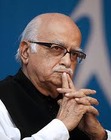L.K. Advani's Blog, page 8
July 1, 2013
THE ‘OPERATION POLO’ IN HYDERABAD
My last two blogs have been principally about Jammu and Kashmir State and about Dr. Syama Prasad Mookerjee, hailed by the country as ‘Independent India’s first martyr for national integration.’ For these two pieces I had relied greatly on V. Shankar’s two volume biography of Vallabhbhai Patel, captioned My Reminiscences of Sardar Patel.
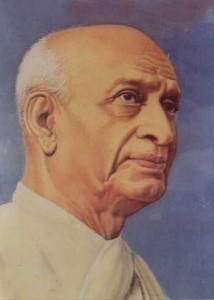 Rajmohan Gandhi’s biography of Sardar Patel notes: “While Shankar’s services were valuable, a more significant role was played by Vapal Pangunni Menon.”
Rajmohan Gandhi’s biography of Sardar Patel notes: “While Shankar’s services were valuable, a more significant role was played by Vapal Pangunni Menon.”
It was Sardar Patel who as free India’s Home Minister decided to create within his Ministry a States Department entrusted with the responsibility of integrating with the country the 564 princely states. Sardar Patel nominated V.P. Menon as Secretary of the States Department. When the Britishers ruled India, these princely states in area constituted nearly half the country.
At a function organised in New Delhi in December, 2000 by Capt. C.P. Krishna Nair, Head of the Leela Group to honour the memory of Shri V.P. Menon, I was presented a pair of invaluable books written by Menon, popularly known as just VP, written by him at the behest of Sardar Patel himself. The first is titled “The Transfer of Power in India” and the second “Integration of the Indian States.” This second one is really a wonderful, and very authentic story of the greatest achievement of free India’s first Home Minister.
Four out of the more important States showed reluctance to accede to India. These were Hyderabad, Jammu and Kashmir, Bhopal and Travancore. Of these Hyderabad was the only one in whose case Government of India was compelled to use force.
V.P. Menon’s book has devoted to Hyderabad three full chapters, running into 87 pages. If I were to sum up briefly, in VP’s own words, why Sardar Patel had to decide, despite Pandit Nehru’s reluctance, to use the army against the Nizam, here is, a précis of what VP has written:
“In accordance with Article II of the Standstill Agreement (which the Nizam had signed with New Delhi) the Government of India appointed K M Munshi as their Agent-General in Hyderabad. I did not then know Munshi very well; but I had particularly been impressed by the way in which, as Home Minister in Bombay from 1937 to 1939, he had handled the communal situation there. When we informed the Government of Hyderabad of Munshi’s appointment, the Nizam made certain conditions. First of all he wanted Munshi to be no more than a trade Agent. I replied to Laik Ali (whom the Nizam had appointed President of his Executive Council on the advice of Kasim Rizvi) drawing his attention to Article II of the Agreement under which the functions of the Agent-General were certainly not confined to trade.
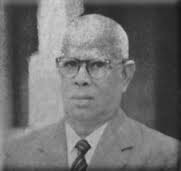 A trivial but nonetheless significant dispute arose over the question of the accommodation that was to be provided in Hyderabad for Munshi, the Nizam refusing to give him even temporarily, till he found accommodation elsewhere. Ultimately two of the buildings belonging to the Indian Army were placed at the disposal of Munshi and his staff.
A trivial but nonetheless significant dispute arose over the question of the accommodation that was to be provided in Hyderabad for Munshi, the Nizam refusing to give him even temporarily, till he found accommodation elsewhere. Ultimately two of the buildings belonging to the Indian Army were placed at the disposal of Munshi and his staff.
Almost before the ink was dry on the Standstill Agreement, the Nizam’s Government issued two ordinances in quick succession.
The first imposed restrictions on the export of all precious metals from Hyderabad to India. The second declared Indian currency to be not legal tender in the State.
I wrote to the Government of Hyderabad on 25 December 1947 pointing out that these two ordinances were violations of the Standstill Agreement.
On top of this, the Government of India received information that the Government of Hyderabad had advanced a loan of Rs 20 Crore to Pakistan in the form of Government of India securities of equivalent value.
This was not all. The Government of Hyderabad informed us officially that it was their intention to appoint agents in several foreign countries. They had already appointed a Public Relations Officer in Karachi without any reference to the Government of India.
There followed some discussion. I stressed that the Government of Hyderabad should repeal the two ordinances in question and ask the Government of Pakistan to return the loan of Rs.20 crore. Referring to the activities of the Razakars, I said that the Government of India took a grave view of the situation created by them in Hyderabad. It appeared to the Government of India that every encouragement had been given by the Hyderabad Government to this reactionary and communal organization. Disquieting reports had been received from the Government of Madras of the activities of the Razakars on their border.
Laik Ali, the President of the Nizam’s Executive Council, had meanwhile come to Delhi and had seen Sardar. Sardar told him quite firmly that an internal settlement in the State was the first requisite for a satisfactory understanding between India and Hyderabad and requested him to work to that end. The discussion could not be continued because of Gandhiji’s assassination on the evening of 30 January. Laik Ali and the Hyderabad delegation subsequently returned to Hyderabad.
Lord Mountbatten gave it as his personal opinion that the position of Hyderabad would be strengthened in the eyes of the world if the Nizam were to declare his intention to introduce responsible government and that all the greater then would be the prospects of the Nizam and his successors remaining constitutional rulers of the State in perpetuity. If the right opportunity was missed or if time was lost, there was a chance that the Nizam might lose his throne altogether through the sheer compulsion of events.
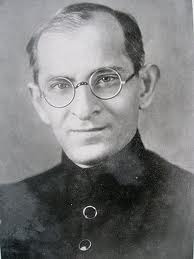 K M Munshi had a very delicate and difficult role to play. While the relations of the Government of India with the Nizam’s Agent-General in Delhi (Nawab Zain Yar Jung) were cordial, Munshi was treated with definite hostility by the Government of Hyderabad and his relations with them were extremely strained. Because of the suspicion with which he was viewed by the Government of Hyderabad he was virtually a prisoner in his own house.
K M Munshi had a very delicate and difficult role to play. While the relations of the Government of India with the Nizam’s Agent-General in Delhi (Nawab Zain Yar Jung) were cordial, Munshi was treated with definite hostility by the Government of Hyderabad and his relations with them were extremely strained. Because of the suspicion with which he was viewed by the Government of Hyderabad he was virtually a prisoner in his own house.
Meanwhile, the Government of Hyderabad had not implemented a single undertaking given by them. No announcement with regard to the loan to Pakistan as promised by Laik Ali had been made; the Currency Ordinance had not been modified, while the ban on the export of precious metals and oilseeds continued to operate. No step, as promised by Laik Ali, in respect of the reconstitution of the Nizam’s Executive Council had been taken. The Razakars, so far from being banned, had become an intolerable nuisance. Border raids showed no signs of abatement. Up to this time we had only tried to press our point of view informally upon the Government of Hyderabad. But now the Government of India decided that we should bring the breaches of the Standstill Agreement to their notice officially. Accordingly, on 23 March, I addressed a letter to the President of the Nizam’s Executive Council which was sent to Munshi to be delivered personally to Laik Ali.
Supported by the Razakars, the ruling clique in Hyderabad was now in a militant mood. The Nizam’s advisers, it was reported to me, had assured him that if India resorted to any economic blockade it was not likely to be effective, as Hyderabad could easily stand on its own legs for the next few months, during which time public opinion in the world could be mobilized in its favour. India was stated to be very weak and to be incapable of military action now or at any time. All the Muslim countries were friendly to Hyderabad and would not permit any military action to be taken against it. The Hyderabad radio went to the extent of announcing that if there was a war against Hyderabad thousands of Pathans would march into India.
On 5 April 1948, Laik Ali sent Nehru a very long reply, of seventeen typed pages, in which he refuted the allegations of breach of the Standstill Agreement and made certain countercharges against the Government of India.
On the very same day, the Nizam wrote to Lord Mountbatten saying that the letter of the State Ministry ‘was in the nature of an ultimatum to be regarded as prelude to an open breach of friendly relations’.
On 16 April, Laik Ali had an interview with Sardar at which I was present. Sardar said: “You know as well as I do where power resides and with whom the fate of the negotiations must finally lie in Hyderabad. The gentleman (Kasim Razvi) who seems to dominate Hyderabad has given his answer. He has categorically stated that if the Indian Dominion comes to Hyderabad it will find nothing but the bones and ashes of the one and a half crores of Hindus. If that is the position, then it seriously undermines the whole future of the Nizam and his dynasty. I am speaking to you plainly because I do not want you to be under any misapprehension. The Hyderabad problem will have to be settled as has been done in the case of other States. No other way is possible. We cannot agree to the continuance of an isolated spot which would destroy the very Union which we have built up with our blood and toil. At the same time, we do wish to maintain friendly relations and to seek a friendly solution. That does not mean that we shall ever agree to Hyderabad’s independence. If its demand to maintain an independent status is persisted in, it is bound to fail.”
In conclusion Sardar asked Laik Ali to go back to Hyderabad and, after consulting the Nizam, to take a final decision, ‘so that both of us know where we stand.’
Throughout the interview Laik Ali appeared nervous. It seemed to me that he was completely taken aback by the forthright manner in which Sardar put forward his views.
Opinion among the advisers of the Government of India was not unanimous on the question of what action should be taken in regard to Hyderabad. The section which favoured a policy of drift had a ready excuse in the bogey of large-scale communal disorders which would follow any positive action against Hyderabad. They apprehended that in Hyderabad the Hindus would be butchered in thousands, and that there would be general slaughter of Muslims in India. There were others who spoke of mass Muslim uprisings in south India, particularly among the Moplahs. This fantastic suggestion was made by people who had never seen a Moplah, much less understood his mentality, and who knew nothing of the situation in Malabar at the time. Another of such fears was that, if India took any action against Hyderabad, Pakistan would interfere. My own opinion was that Pakistan was surely not going to risk a war with India on the Hyderabad issue.
There was also some propaganda to the effect that Hyderabad aircraft would bomb cities like Bombay, Madras, Calcutta and even Delhi. This Propaganda caused a certain amount of apprehension amongst the people of the neighbouring provinces.
Meanwhile Laik Ali was pressing that the Hyderabad issue should be taken to the United Nations Organizations.
The American Charge d’Affaires in New Delhi apprised us meanwhile of the fact the Nizam had written to the President of the United States requesting that he should arbitrate and that the latter had refused.
The Razakars did not spare even missionaries and nuns. Early in September the States Ministry received complaints that some foreign missionaries had been assaulted and some nuns molested by the Razakars.
The military view was that the campaign could not last beyond three weeks. Actually, everything was over within less than a week.
On 9 September, after a careful evaluation of all the considerations and only when it was clear that no other alternative remained open did the Government of India take the decision to send Indian troops into Hyderabad to restore peace and tranquility inside the State and a sense of security in the adjoining Indian territory. This decision was communicated to the Southern Command, who ordered that the Indian forces should march into Hyderabad in the early hours of Monday the 13th.
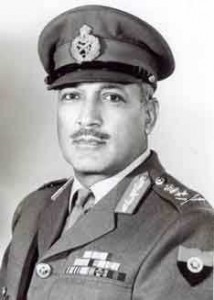
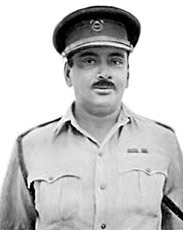 The Indian forces were commanded by Major-General J.N. Chaudhury under the direction of Lt.-General Maharaj Shri Rajendrasinhji, who was then the General Office Commanding-in-Chief, Southern Command. This operation was given the name ‘Operation Polo’ by the Army Headquarters.
The Indian forces were commanded by Major-General J.N. Chaudhury under the direction of Lt.-General Maharaj Shri Rajendrasinhji, who was then the General Office Commanding-in-Chief, Southern Command. This operation was given the name ‘Operation Polo’ by the Army Headquarters.
There was some stiff resistance on the first and second days. After this, resistance petered out and virtually collapsed. On our side the total casualties were slight but on the other side, owing to scrappy operations and lack of discipline, the Irregulars and the Razakars suffered comparatively more casualties. The number of dead was little over 800. It is unfortunate that so many should have died in this action, though the number is insignificant when weighed against the killings, rape and loot inflicted by the Razakars on the Hindus of the State.
On the evening of 17 September, the Hyderabad army surrendered. On 18th, the Indian troops, under Major-General Chaudhuri, entered Hyderabad City. The operation had lasted barely 108 hours.
On 17 September, Laik Ali and his cabinet tendered their resignations. The Nizam sent for K M Munshi (who had been under house arrest ever since the Police Action began) and informed him that he had given orders for his army to surrender; that he would be forming a new government; that Indian troops were free to go to Secunderabad and Bolarum, and that the Razakars would be banned. Munshi communicated this to the Government of India. Major-General Chaudhuri took charge as Military Governor on 18 September. The members of the Laik Ali ministry were placed under house arrest. Rizvi was arrested on 19 September.
There was not a single communal incident in the whole length and breadth of India throughout the time of the operation. There was universal jubilation at the swift and successful ending of the Hyderabad episode and messages of congratulation poured in to the Government of India from all parts of the country.
*
TAILPIECE
In one of my earlier blogs based on a book written by a 1947 I.A.S. officer, one MKK Nair titled “With No Ill Feeling to Anybody”, I had quoted a Pioneer report from the same source saying that Sardar Patel had walked out of a Cabinet meeting because of some remarks of the PM which he felt were offensive. This book also says that Nehru favoured the U.N. route instead of the Army Action decided by Patel.
L.K. Advani
New Delhi
July 02, 2013

June 29, 2013
उमर, अपने पर नियंत्रण रखो!
 जम्मू एवं कश्मीर के मुख्यमंत्री उमर अब्दुल्ला को जम्मू एवं कश्मीर सम्बन्धी भाजपा के विचारों से असहमत होने का पूरा अधिकार है। लेकिन मैं उन्हें सलाह देना चाहता हूं कि उन्हें ‘धोखाधड़ी‘ और ‘विश्वासघात‘ जैसे शब्दों से भरी आक्रामक भाषा का उपयोग कभी नहीं करना चाहिए।
जम्मू एवं कश्मीर के मुख्यमंत्री उमर अब्दुल्ला को जम्मू एवं कश्मीर सम्बन्धी भाजपा के विचारों से असहमत होने का पूरा अधिकार है। लेकिन मैं उन्हें सलाह देना चाहता हूं कि उन्हें ‘धोखाधड़ी‘ और ‘विश्वासघात‘ जैसे शब्दों से भरी आक्रामक भाषा का उपयोग कभी नहीं करना चाहिए।
उन्हें पता होना चाहिए कि संविधान सभा में धारा-370 जो जम्मू एवं कश्मीर राज्य को विशेष दर्जा प्रदान करती, को जब स्वीकृति दी गई तब तक जनसंघ का जन्म भी नहीं हुआ था। हालांकि संविधान के प्रारूप में यदि कोई ऐसा प्रावधान था जिसका विरोध लगभग समूची कांग्रेस पार्टी कर रही थी तो वह यही प्रावधान था। इस मुद्दे पर नवम्बर, 1946 में संविधान सभा द्वारा संविधान को औपचारिक रूप से अंगीकृत करने से दो महीने पूर्व ही विचार किया गया। प्रधानमंत्री पण्डित नेहरू विदेश जा चुके थे।
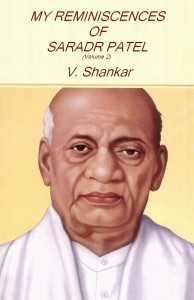
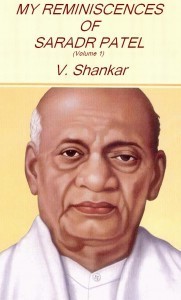 सरदार पटेल के तत्कालीन निजी सचिव वी. शंकर द्वारा लिखित दो खंडों में प्रकाशित पुस्तक ‘माई रेमिनीसेंसेज ऑफ सरदार पटेल” के अनुसार विदेश जाने से पहले नेहरू ने जम्मू व कश्मीर राज्य से संबंधित प्रावधानों को शेख अब्दुल्ला के साथ बैठकर अंतिम रूप दिया और संविधान सभा के माध्यम से उन प्रावधानों को आगे बढ़ाने का काम अपने रक्षामंत्री गोपालस्वामी अयंगार को सौंप दिया।
सरदार पटेल के तत्कालीन निजी सचिव वी. शंकर द्वारा लिखित दो खंडों में प्रकाशित पुस्तक ‘माई रेमिनीसेंसेज ऑफ सरदार पटेल” के अनुसार विदेश जाने से पहले नेहरू ने जम्मू व कश्मीर राज्य से संबंधित प्रावधानों को शेख अब्दुल्ला के साथ बैठकर अंतिम रूप दिया और संविधान सभा के माध्यम से उन प्रावधानों को आगे बढ़ाने का काम अपने रक्षामंत्री गोपालस्वामी अयंगार को सौंप दिया।
अयंगार ने अपने प्रस्तावों को कांग्रेस संसदीय दल की बैठक में प्रस्तुत किया। शंकर के अनुसार इससे चारों ओर से रोषपूर्ण विरोध के स्वर उठने लगे और अयंगार स्वयं को बिल्कुल अकेला महसूस कर रहे थे , एक अप्रभावी समर्थक के रूप में मौलाना आजाद को छोड़कर।
शंकर के अनुसार, ‘पार्टी में एक बड़ा वर्ग था, जो जम्मू व कश्मीर और भारत अन्य तिरस्कृत राज्यों के बीच भेदभाव के किसी भी सुझाव को भावी दृष्टि से देख रहा था और जम्मू व कश्मीर को विशेष राज्य का दर्जा दिए जाने के संबंध में एक निश्चित सीमा से आगे बढ़ने के लिए तैयार नहीं था।
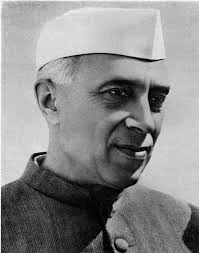 सरदार पटेल स्वयं इसी मत के पक्ष में थे; लेकिन नेहरू और गोपालस्वामी अयंगार के निर्णयों में दखलंदाजी न करने की अपनी स्वाभाविक नीति के चलते उन्होंने अपने विचार प्रस्तुत नहीं किए और इस प्रकार, नेहरू और अयंगार ने अपने अनुसार ही सारा मामला निपटाया था। सच तो यह है कि प्रस्ताव का प्रारूप तैयार करने में सरदार पटेल ने भाग नहीं लिया था। इनके बारे में उन्हें तभी पता चला, जब गोपालस्वामी अयंगार ने कांग्रेस संसदीय दल के सामने उसे पढ़कर सुनाया।‘
सरदार पटेल स्वयं इसी मत के पक्ष में थे; लेकिन नेहरू और गोपालस्वामी अयंगार के निर्णयों में दखलंदाजी न करने की अपनी स्वाभाविक नीति के चलते उन्होंने अपने विचार प्रस्तुत नहीं किए और इस प्रकार, नेहरू और अयंगार ने अपने अनुसार ही सारा मामला निपटाया था। सच तो यह है कि प्रस्ताव का प्रारूप तैयार करने में सरदार पटेल ने भाग नहीं लिया था। इनके बारे में उन्हें तभी पता चला, जब गोपालस्वामी अयंगार ने कांग्रेस संसदीय दल के सामने उसे पढ़कर सुनाया।‘
कांग्रेस संसदीय दल की बैठक में अपने साथ हुए कठोर बरताव से निराश होकर अयंगार अंतत: सरदार पटेल के पास पहुंचे और उन्हें इस स्थिति से बचाने का अनुरोध किया। सरदार पटेल ने कांग्रेस संसदीय ल की एक और बैठक बुलाई।
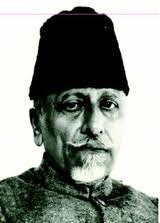 शंकर लिखते हैं कि: ”मैंने कभी भी ऐसी तूफानी और कोलाहलपूर्ण बैठक नहीं देखी। मौलाना आजाद को भी शोर मचाकर चुप करा दिया गया। अंत में चर्चा को सामान्य व व्यावहारिक स्थिति में लाने और बैठक में उपस्थित लोगों को यह समझाने-कि अंतरराष्ट्रीय जटिलताओं के कारण एक कामचलाऊ व्यवस्था ही की जा सकती है-का काम सरदार पटेल पर छोड़ा गया।‘
शंकर लिखते हैं कि: ”मैंने कभी भी ऐसी तूफानी और कोलाहलपूर्ण बैठक नहीं देखी। मौलाना आजाद को भी शोर मचाकर चुप करा दिया गया। अंत में चर्चा को सामान्य व व्यावहारिक स्थिति में लाने और बैठक में उपस्थित लोगों को यह समझाने-कि अंतरराष्ट्रीय जटिलताओं के कारण एक कामचलाऊ व्यवस्था ही की जा सकती है-का काम सरदार पटेल पर छोड़ा गया।‘
”ऐसा प्रतीत होता है कि कांग्रेस पार्टी अनिच्छापूर्वक ही सरदार पटेल की इच्छाओं के सामने झुकी। वस्तुत: इसी से स्पष्ट हो जाता है कि संविधान सभा में इस प्रावधान पर हुई चर्चा इतनी सतही और नीरस क्यों थी। अयंगार के अलावा और किसी ने कुछ नहीं कहा-न विरोध में, और न ही समर्थन में।”
यह ज्ञात हुआ, यहां तक कि सरदार पटेल और अयंगार को भी उन प्रारूप प्रावधानों को कांग्रेस पार्टी को सहमत कराना मुश्किल रहा जो विदेश जाने से पूर्व अयंगार और शेख अब्दुल्ला ने पण्डित नेहरू के साथ बैठकर तैयार किए थे; शेख अब्दुल्ला इन स्वीकृत प्रारूप् पर भी पुनर्विचार के संकेत देने लगे थे।
14 अक्तूबर, 1949 को गृह मंत्रालय में कश्मीर मामलों के सचिव विष्णु सहाय ने वी. शंकर को लिखा कि शेख अब्दुल्ला ने प्रारूप पर अपना रूख इस दलील पर बदला है कि नेशनल कांफ्रेंस की वर्किंग कमेटी ने इसे स्वीकृति नहीं दी है।
सहाय लिखते हैं कि अब्दुल्ला ने एक वैकल्िपिक प्रारूप भेजा है जिसमें प्रावधान है कि भारतीय संविधान जम्मू एवं कश्मीर में केवल माने गए विषयों पर ही लागू होगा। शेख ने इस तथ्य पर भी आपत्ति की कि प्रस्तावित अनुच्छेद को अस्थायी वर्णित किया गया है और राज्य की संविधान सभा इसे समाप्त करने हेतु सशक्त है।
15 अक्तूबर, 1949 को शेख अब्दुल्ला और उनके दो साथी अयंगार से मिले तथा उन पर प्रारूप बदलने को दवाब डाला। उसी दिन अयंगार ने सरदार पटेल को इसकी जानकारी दी। 15 अक्तूबर को सरदार पटेल को लिखे अपने पत्र में अयंगार ने लिखा कि ”उनके (अब्दुल्ला और उनके दो साथियों) द्वारा की गई आपत्तियों में कोई ठोस मुद्दा नहीं था।” उन्होंने आगे जोड़ा ”अंत में मैंने उन्हें कहा कि मुझे उम्मीद नहीं थी कि आपके घर (पटेल) और पार्टी बैठक में हमारे प्रारूप के प्रावधानों पर सहमत होने के बाद, वे मुझे और पण्डितजी को इस तरह से शर्मिंदा करेंगे जिसका वे प्रयास कर रहे थे। उत्तर में, शेख अब्दुल्ला ने कहा कि ऐसा सोचने पर वह भी काफी दु:ख महसूस कर रहे हैं। लेकिन अपने लोगों के प्रति अपने कर्तव्य का निर्वाह करते हुए मुझे इस रूप में प्रारूप स्वीकार करना असम्भव है…….. उसके पश्चात् मैंने उन्हें कहा कि आप वापस जाइए और इस सब पर विचार कीजिए जो मैंने आपको कहा है और आशा है कि वह सही दिमागी दशा में आज या कल मेरे पास वापस आएंगे। तत्पश्चात् मैंने मामले पर आगे विचार किया तथा एक प्रारूप लिखा जिसमें मुख्य दृष्टिकोण को बदले बिना जोकि हमने हमारे प्रारूप में उल्लिखित किया है, में मामूली सा बदलाव किया है जिसे मैं उम्मीद करता हूं कि शेख अब्दुल्ला राजी हो जाएंगे।”
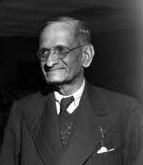 16 अक्तूबर, 1949 को सरदार पटेल का अयंगार को जवाब संक्षिप्त और कठोर था। वह अयंगार से इस पर सहमत नहीं थे कि बदलाव मामूली हैं। पटेल लिखते हैं: ”मैंने पाया कि मूल प्रारूप में ठोस बदलाव किए गए हैं, विशेष रूप से राज्य नीति के मूलभूत अधिकारों और नीति निदेशक सिध्दान्तों की प्रयोजनीयता को लेकर। आप स्वयं इस विसंगति को महसूस कर सकते हैं कि राज्य भारत का हिस्सा बन रहा है और उसी समय इन प्रावधानों में से किसी को भी स्वीकार नहीं कर रहा।”
16 अक्तूबर, 1949 को सरदार पटेल का अयंगार को जवाब संक्षिप्त और कठोर था। वह अयंगार से इस पर सहमत नहीं थे कि बदलाव मामूली हैं। पटेल लिखते हैं: ”मैंने पाया कि मूल प्रारूप में ठोस बदलाव किए गए हैं, विशेष रूप से राज्य नीति के मूलभूत अधिकारों और नीति निदेशक सिध्दान्तों की प्रयोजनीयता को लेकर। आप स्वयं इस विसंगति को महसूस कर सकते हैं कि राज्य भारत का हिस्सा बन रहा है और उसी समय इन प्रावधानों में से किसी को भी स्वीकार नहीं कर रहा।”
पटेल ने आगे लिखा: ”शेख साहब की उपस्थिति में हमारी पार्टी द्वारा समूचे प्रस्ताओं को स्वीकृत करने के पश्चात् इसमें किसी भी बदलाव को मैं पसंद नहीं करता। जब चाहे शेख साहब लोगों के प्रति अपने कर्तव्य की दलील पर सदैव हमसे टकराव करते रहते हैं। मान लिया कि उनकी भारत या भारतीय सरकार या आपके और प्रधानमंत्री के जिन्होंने उनकी बात मानने में कोई कोताही नहीं बरती, के प्रति भी निजी आधार पर कोई कर्तव्य नहीं बनता।
अपनी कसी हुई टिप्पणियों में उन्होंने कहा: ”इन परिस्थितियों में मेरी स्वीकृति का कोई प्रश्न ही नहीं उठता। यदि आपको यह करना सही लगता है तो आप आगे बढ़ सकते हैं।”
इस बीच शेख अब्दुल्ला ने अयंगार का संशोधित प्रारूप भी रद्द कर दिया और 17 अक्तूबर को अयंगार को लिखे एक पत्र में संविधान सभा से त्यागपत्र देने की धमकी भी दे दी।
17 अक्तूबर, 1949 को संविधान सभा ने बगैर ज्यादा बहस के अयंगार के मूल प्रारूप को स्वीकर कर लिया। शेख अब्दुल्ला से आशा थी कि वह बोलेंगे, लेकिन वह खिन्न और मौन रहे।
नेहरूजी के विदेश से लौटने के बाद सरदार पटेल ने उन्हें उनकी अनुपस्थिति में हुए घटनाक्रम को निम्न शब्दों में लिखा (3 नवम्बर, 1949):
”प्रिय जवाहरलाल,
कश्मीर सम्बन्धी प्रावधान के बारे में कुछ कठिनाईयां थी। शेख साहब उस समझौते से मुकर गए जो कश्मीर सम्बन्धी प्रावधान के सम्बन्ध में वह आपके साथ सहमत हुए थे। वह मूलभूत चरित्र में कुछ निश्चित बदलावों पर जोर दे रहे थे जो नागरिकता और मौलिक अधिकारों सम्बन्धी प्रावधानों को कश्मीर में लागू नहीं होने देने और इन सब मामलों सहित अन्य में भी वे हैं जो राज्य सरकार द्वारा एकीकरण के तीन विषयों जोकि इस रूप में वर्णित हैं कि महाराजा 8 मार्च, 1948 की उद्धोषणा के तहत नियुक्त मंत्रिपरिषद की सलाह पर काम कर रहे हैं। काफी विचार विमर्श के बाद मैं पार्टी को इन सब बदलावों पर सहमत कर सका सिवाय अंतिम को छोड़कर, जोकि संशोधित किया गया जिससे न केवल पहला मंत्रिमण्डल कॅवर हो सके अपितु इस उद्धोषणा के तहत तत्पश्चात् भी मंत्रिमण्डल नियुक्त हो सकें।
शेख साहब अपने आपको इन बदलावों से नहीं जोड़ सके , लेकिन हम इस मामले में उनके विचारों को नहीं मान सके और प्रावधान सदन ने जैसाकि हमने बदले थे, को पारित कर दिया। इसके पश्चात् उन्होंने गोपालास्वामी अयंगार को पत्र लिखकर संविधान सभा की सदस्यता से त्यागपत्र देने की धमकी दी है। गोपालस्वामी ने उनको जवाब दिया है कि वह आपके आने तक अपना निर्णय स्थगित रखें।
आपका
वल्लभभाई पटेल
जैसाकि इस ब्लॉग के शुरू में ही मैंने लिखा कि जम्मू एवं कश्मीर के संदर्भ में भाजपा के रूख पर ‘धोखाधड़ी‘ जैसे अपमानजनक शब्दों का उपयोग करना किसी के लिए भी शोभनीय नहीं है। यह एक ऐसा मुद्दा है जिस पर 1951 में जनसंघ के जन्म से लेकर आज तक हम न केवल सुस्पष्ट, स्पष्टवादी और सतत् दृष्टिकोण बनाए हुए हैं, अपितु यही एक ऐसा मुद्दा है जिसे लेकर हमारे संस्थापक-अध्यक्ष ने अपना जीवन बलिदान कर दिया और जिसके लिए लाखों पार्टी कार्यकर्ताओं ने अपनी गिरफ्तारियां दी तथा अनेक तरह के कष्ट सहे। कानपुर में हमारे पहले अखिल भारतीय सम्मेलन के समय से लेकर हम जम्मू एवं कश्मीर के भारत में पूर्ण एकीकरण के लिए कटिबध्द हैं।
पश्च्य लेख (टेलपीस)
सरदार पटेल की मृत्यु दिसम्बर , 1950 में हो गई थी। 24 जुलाई 1952 को पण्डित नेहरू ने जम्मू एवं कश्मीर से जुड़े मुद्दों पर लोकसभा में एक विस्तृत वक्तव्य दिया। इसमें उन्होंने मजबूती से अनुच्छेद 370 का बचाव किया। उन्होंने यह भी कहा कि सरदार पटेल ही जम्मू एवं कश्मीर के मामले को देख रहे थे। वी. शंकर जो 1952 में आयंगार के मंत्रालय में संयुक्त सचिव थे, अपने मंत्री के पास गए और जो हुआ था उस पर परस्पर जानकारी साझा की। गोपालस्वामी आयंगार की टिप्पणी थी: ”यह सरदार पटेल की उस उदारता का गलत और दुर्भावनापूर्ण प्रतिफल है, जो उन्होंने अपने उत्कृष्ट निर्णय को छोड़कर पण्डित नेहरू के दृष्टिकोण को स्वीकार करने में दिखाई।”
लालकृष्ण आडवाणी
नई दिल्ली
28 जून, 2013

June 27, 2013
OMAR, DO RESTRAIN YOURSELF!
 Omar Abdullah, Chief Minister of Jammu and Kashmir State, has every right to disagree with the BJP on matters relating to J&K. But I would advise him never to use offensive language and words like ‘cheating’ and ‘deceiving’ in that context.
Omar Abdullah, Chief Minister of Jammu and Kashmir State, has every right to disagree with the BJP on matters relating to J&K. But I would advise him never to use offensive language and words like ‘cheating’ and ‘deceiving’ in that context.
He should know that when in the Constituent Assembly, Art. 370, which confers a Special Status on Jammu and Kashmir state was sought to be approved, the Jana Sangh had not even been born. However, if there was any provision in the Draft Constitution which had almost the entire Congress Party up in arms against it, it was this provision. This issue was considered by the Constituent Assembly in November, 1949 just two months before the Constitution was formally adopted. Prime Minister Pandit Nehru had left for abroad.

 According to a two-volume book My Reminiscences of Sardar Patel, written by V. Shankar, Private Secretary to the Union Home Minister Sardar Patel, before leaving for abroad, Pandit Nehru finalized the draft provisions with Sheikh Abdullah, and entrusted to Gopalaswamy Ayyangar the task of piloting these provisions through the Constituent Assembly.
According to a two-volume book My Reminiscences of Sardar Patel, written by V. Shankar, Private Secretary to the Union Home Minister Sardar Patel, before leaving for abroad, Pandit Nehru finalized the draft provisions with Sheikh Abdullah, and entrusted to Gopalaswamy Ayyangar the task of piloting these provisions through the Constituent Assembly.
Ayyangar first presented his proposals to the Congress Parliamentary Party. His presentation, Shankar notes, provoked “a storm of angry protests from all sides, and Gopalaswamy Ayyangar found himself a lone defender with Maulana Azad an ineffective supporter”.
According to Shankar, “In the party, there was a strong body of opinion which looked askance at any suggestion of discrimination between the Jammu and Kashmir State and other States as members of the future Indian Union and was not prepared to go beyond certain limits in providing for the special position of Jammu and Kashmir.
 “Sardar was himself fully in accord with this opinion, but due to his usual policy of not standing in the way of Pandit Nehru and Gopalaswamy Ayyangar who sorted out problems in their own light, he had kept his own views in the background. In fact, he had not taken any part in framing the draft proposals with the result that he heard the proposals only when Gopalaswamy Ayyangar announced them to the Congress Party.”
“Sardar was himself fully in accord with this opinion, but due to his usual policy of not standing in the way of Pandit Nehru and Gopalaswamy Ayyangar who sorted out problems in their own light, he had kept his own views in the background. In fact, he had not taken any part in framing the draft proposals with the result that he heard the proposals only when Gopalaswamy Ayyangar announced them to the Congress Party.”
Extremely upset with the rough reception he had received at the Congress Parliamentary Party, Ayyangar rushed to Sardar Patel for help. Sardar Patel had another meeting of the Congress Parliamentary Party convened.
 Shankar reports: “The meeting was one of the stormiest I have ever witnessed. Even Maulana Azad was shouted down. It was left to Sardar to bring the discussion down to the practical plane and to plead that because of the international complications, a provisional approach alone could be made.”
Shankar reports: “The meeting was one of the stormiest I have ever witnessed. Even Maulana Azad was shouted down. It was left to Sardar to bring the discussion down to the practical plane and to plead that because of the international complications, a provisional approach alone could be made.”
“Reluctantly, it seems, the Congress Party fell in line with the Sardar’s wishes. Indeed it is this that explains why in the Constituent Assembly the discussion on this provision was so vapid and sketchy. Apart from Ayyangar’s own speech, there was not a single worthwhile intervention, either for, or against.”
It transpires that even while Sardar Patel and Ayyangar were exerting hard to make the Congress Party agree to the draft proposals as drawn up by Ayyangar and Sheikh Abdullah with Pandit Nehru before his departure for abroad, the Sheikh started having second thoughts about the agreed draft itself.
On 14th October, 1949, Vishnu Sahay, Secretary for Kashmir Affairs in the Home Ministry wrote to V. Shankar that Sheikh Abdullah had changed his stand on the draft on the plea that the Working Committee of the National Conference did not approve of it.
Abdullah, Sahay wrote, had sent an alternative draft which provided that the Indian Constitution shall apply to Jammu & Kashmir only in regard to the acceded subjects. The Sheikh also objected to the fact that the proposed Article had been described as Temporary and that the Constituent Assembly of the State had been empowered to terminate it.
On 15 October, 1949, Sheikh Abdullah and two colleagues of his met Ayyangar and pressured him into changing the draft. Ayyangar reported this to Sardar Patel that very day. In his letter to Patel dated 15 October, Ayyangar wrote that “there was no substance at all in the objections that they (Abdullah and his two colleagues) had put forward”. He added: “At the end of it all, I told them that I had not expected that, after having agreed to the substance of our draft both at your house (Patel’s) and at the Party meeting, they would let me and Panditji down in the manner they were attempting to do. In answer, Sheikh Abdullah said that he felt very grieved that I should think so, but that in the discharge of his duty to his own people he found it impossible to accept our draft as it was …… I told him thereafter to go back and think over all that I have told them and hoped that he would come back to me in a better frame of mind in the course of the day or tomorrow. I have since thought over the matter further and dictated a draft which, without giving up the essential stand we have taken in our original draft, readjusts it in minor particulars in a way which I am hoping Sheikh Abdullah would agree to.”
 Sardar Patel’s reply to Ayyangar dated 16th October, 1949 was curt and sharp. He did not agree with Ayyangar that the changes were minor. Patel wrote: “I find there are substantial changes over the original draft, particularly in regard to the applicability of fundamental rights and directive principles of State policy. You can yourself realize the anomaly of the State becoming part of India and at the same time not recognizing any of these provisions.”
Sardar Patel’s reply to Ayyangar dated 16th October, 1949 was curt and sharp. He did not agree with Ayyangar that the changes were minor. Patel wrote: “I find there are substantial changes over the original draft, particularly in regard to the applicability of fundamental rights and directive principles of State policy. You can yourself realize the anomaly of the State becoming part of India and at the same time not recognizing any of these provisions.”
Patel added: “I do not at all like any change after our party has approved of the whole arrangement in the presence of Sheikh Sahib himself. Whenever Sheikh Sahib wishes to back out, he always contfronts us with his duty to the people. Of course, he owes no duty to India or to the Indian Government, or even on a personal basis, to you and the Prime Minister who have gone all out to accommodate him.”
In a clinching remark he said: “In these circumstances, any question of my approval does not arise. If you feel it is the right thing to do, you can go ahead with it.”
Meanwhile, Sheikh Abdullah rejected even Ayyangar’s revised draft, and in a letter addressed to Ayyangar on 17th October threatened to resign from the Constituent Assembly.
On 17th October, 1949, the Constituent Assembly adopted Ayyangar’s original draft without much of a debate. Sheikh Abdullah was expected to speak, but he remained sullen and silent.
After Nehruji’s return from abroad, Sardar Patel summed up the happenings which took place in his absence (letter dated 3rd November, 1949) in the following words :
“My dear Jawaharlal,
There was some difficulty about the provision relating to Kashmir. Sheikh Sahib went back on the agreement which he had reached with you in regard to the provision relating to Kashmir. He insisted on certain changes of a fundamental character which would exclude in their application to Kashmir the provisions relating to citizenship and fundamental rights and make it necessary in all these matters as well as others not covered by the accession to three subjects to seek the concurrence of the State Government which is sought to be defined as the Maharaja acting on the advice of the Council of Ministers appointed under the proclamation of 8 March 1948. After a great deal of discussion, I could persuade the party to accept all the changes except the last one, which was modified so as to cover not merely the first Ministry so appointed but any subsequent Ministries which may be appointed under that proclamation.
Sheikh Sahib has not reconciled himself to this change, but we could not accommodate him in this matter and the provision was passed through the House as we had modified. After this he wrote a letter to Gopalaswami Ayyangar threatening to resign from the membership of the Constituent Assembly. Gopalaswami has replied asking him to defer his decision until your returned.
Yours sincerely,
Vallabhbhai Patel”
At the very commencement of this blog I have said that it is highly improper for anyone to use offensive words like “cheating’ in the context of BJP’s stand on Jammu and Kashmir. It is an issue on which we have not only been unequivocal, forthright and consistent from the time Jana Sangh was born in 1951 till today, but it is an issue for which the Party’s Founder – President laid down his own life, and for which tens of thousands of party activists have courted arrest and suffered in many other ways. Since our very first all India session at Kanpur, we have been championing complete integration of J&K State with India.
TAILPIECE
Sardar Patel passed away in December, 1950. On July 24, 1952, Pandit Nehru made a comprehensive statement in the Lok Sabha on issues relating to Jammu and Kashmir State. In this he strongly defended Art. 370. He also remarked that it was Sardar Patel who was dealing with J.& K. V. Shankar, who in 1952 was Joint Secretary in Ayyangar’s Ministery ran into his Minister and exchanged notes about the happening. Gopalaswamy Ayyangar commented: “It is an ill – return to Sardar for the magnanimity he had shown in accepting Panditji’s point of view against his better judgement.
L.K. ADVANI
New Delhi
28 June, 2013

June 23, 2013
राष्ट्रीय एकीकरण के लिए स्वतंत्र भारत का पहला शहीद
आज 23 जून है। ठीक साठ वर्ष पूर्व 1953 में इसी दिन देश को जम्मू एवं कश्मीर राज्य से ह्दय विदारक समाचार मिला कि डा. श्यामा प्रसाद मुकर्जी अब हमारे बीच नहीं रहे।
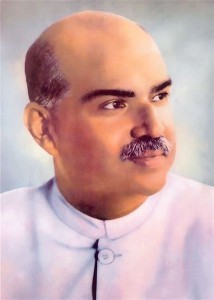 मुझे अच्छी तरह से स्मरण है कि रात्रि के लगभग 2 बजे या उसके आसपास मैं जयपुर के जनसंघ कार्यालय के बाहर किसी के खटखटाने और रोने की आवाज सुनकर नींद से जागा; और मैंने सुना कि ”आडवाणीजी, उन्होंने हमारे डा. मुकर्जी को मार दिया है!” वह एक स्थानीय पत्रकार था, जिसको टिकर पर यह समाचार मिला और वह अपने को रोक नहीं पाया तथा हमारे कार्यालय आकर इस दु:ख में मेरे साथ शामिल हुआ।
मुझे अच्छी तरह से स्मरण है कि रात्रि के लगभग 2 बजे या उसके आसपास मैं जयपुर के जनसंघ कार्यालय के बाहर किसी के खटखटाने और रोने की आवाज सुनकर नींद से जागा; और मैंने सुना कि ”आडवाणीजी, उन्होंने हमारे डा. मुकर्जी को मार दिया है!” वह एक स्थानीय पत्रकार था, जिसको टिकर पर यह समाचार मिला और वह अपने को रोक नहीं पाया तथा हमारे कार्यालय आकर इस दु:ख में मेरे साथ शामिल हुआ।
यह समाचार लाखों लोगों के लिए एक गहरा धक्का था। इस वर्ष की शुरुआत में डा. श्यामा प्रसाद की नवगठित पार्टी भारतीय जनसंघ का कानपुर में अखिल भारतीय सम्मेलन सम्पन्न हुआ था। इस सम्मलेन में राजस्थान से एक प्रतिनिधि के रुप में भाग लेने का सौभाग्य मुझे मिला था। यहीं पर फूलबाग में इकठ्ठे हुए हजारों प्रतिनिधियों को डा. मुकर्जी ने यह राष्ट्रभक्तिपूर्ण प्रेरक आह्वान किया था-”एक देश में दो प्रधान, दो निशान, दो विधान, नहीं चलेंगे, नहीं चलेंगे।”
कानपुर में ही पार्टी ने जम्मू एवं कश्मीर के भारत में पूर्ण एकीकरण को लेकर पहला राष्ट्रव्यापी आंदोलन चलाने का संकल्प लिया। डा. मुकर्जी ने तय किया कि वह इस आंदोलन का नेतृत्व आगे रहकर करेंगे-व्यक्तिगत रुप से शेख अब्दुल्ला के द्वारा लागू किए गए परमिट सिस्टम की अवज्ञा कर। उन्होंने यह भी निर्णय किया कि वह इस आन्दोलन के लिए समर्थन जुटाने हेतु देश के विभिन्न हिस्सों में जाएंगे। अपने इस पूर्व-अभियान जोकि रेलगाड़ी के माध्यम से हुआ, में उन्होंने श्री वाजपेयी को अपने साथ रहने को कहा।
उन दिनों मैं राजस्थान के कोटा में था। जब मुझे ज्ञात हुआ कि डा. मुकर्जी और अटलजी कोटा जंक्शन से गुजरेंगे तो मैं उनसे स्टेशन पर मिला। तब मुझे इसका तनिक भी आभास नहीं था कि मैं हमारी पार्टी के महान संस्थापक डा. श्यामा प्रसाद को अंतिम बार देख रहा हूं।
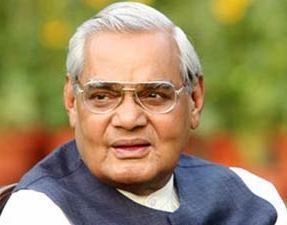 8 मई, 1953 को डा. मुकर्जी दिल्ली से जम्मू जाने के लिए पंजाब रवाना हुए। अमृतसर पर 20,000 से ज्यादा के समूह ने उनका शानदार स्वागत किया। अमृतसर से पठानकोट और वहां से माधोपुर की उनकी यात्रा एक विजयी जुलूस की तरह थी। माधोपुर एक छोटा सा कस्बा है जो पठानकोट सैनिक कैण्ट से करीब बारह किलोमीटर की दूरी पर है। माधोपुर रावी नदी के किनारे पर स्थित है और यही रावी नदी पंजाब को जम्मू एवं कश्मीर से अलग करती है। डा. मुकर्जी, अटलजी के साथ एक जीप पर बैठकर जम्मू-कश्मीर में प्रवेश करने हेतु रावी के पुल की ओर बढे। पुल के बीच में जम्मू एवं कश्मीर पुलिस के एक जत्थे ने जीप को रोका और डा. मुकर्जी से पूछा कि क्या उनके पास परमिट है। डा. मुकर्जी ने नहीं में उत्तर दिया और कहा भारतीय संविधान के तहत प्रत्येक भारतीय नागरिक को देश की किसी भी भाग में जाने की आजादी है। जब पुलिस ने उन्हें गिरफ्तार कर लिया तो उन्होंने वाजपेयीजी से कहा ”कृपया आप वापस जाओ और लोगों को बताओ कि मैंने बगैर परमिट के जम्मू एवं कश्मीर राज्य में प्रवेश किया है, भले ही एक कैदी के रुप में।”
8 मई, 1953 को डा. मुकर्जी दिल्ली से जम्मू जाने के लिए पंजाब रवाना हुए। अमृतसर पर 20,000 से ज्यादा के समूह ने उनका शानदार स्वागत किया। अमृतसर से पठानकोट और वहां से माधोपुर की उनकी यात्रा एक विजयी जुलूस की तरह थी। माधोपुर एक छोटा सा कस्बा है जो पठानकोट सैनिक कैण्ट से करीब बारह किलोमीटर की दूरी पर है। माधोपुर रावी नदी के किनारे पर स्थित है और यही रावी नदी पंजाब को जम्मू एवं कश्मीर से अलग करती है। डा. मुकर्जी, अटलजी के साथ एक जीप पर बैठकर जम्मू-कश्मीर में प्रवेश करने हेतु रावी के पुल की ओर बढे। पुल के बीच में जम्मू एवं कश्मीर पुलिस के एक जत्थे ने जीप को रोका और डा. मुकर्जी से पूछा कि क्या उनके पास परमिट है। डा. मुकर्जी ने नहीं में उत्तर दिया और कहा भारतीय संविधान के तहत प्रत्येक भारतीय नागरिक को देश की किसी भी भाग में जाने की आजादी है। जब पुलिस ने उन्हें गिरफ्तार कर लिया तो उन्होंने वाजपेयीजी से कहा ”कृपया आप वापस जाओ और लोगों को बताओ कि मैंने बगैर परमिट के जम्मू एवं कश्मीर राज्य में प्रवेश किया है, भले ही एक कैदी के रुप में।”
यह उल्लेखनीय है कि पठानकोट में पंजाब के वरिष्ठ पुलिस अधिकारियों ने डा. श्यामा प्रसाद को मिलकर बताया कि उन्हें पंजाब सरकार से निर्देश हैं कि यदि डा. मुकर्जी के पास परमिट नहीं भी हो तो भी उन्हें पुल पर स्थित माधोपुर पोस्ट जाने दिया जाए।
साफ है कि यह केन्द्र सरकार और जम्मू एवं कश्मीर राज्य सरकार का संयुक्त ऑपरेशन था कि डा. मुकर्जी को जम्मू एवं कश्मीर राज्य में बंदी बनाकर रखा जाए न कि पंजाब में।
इस सुनियोजित अभियान का परिणाम देश के लिए सदमा पहुंचाने वाली विपदा के रुप में सामने आया। 23 जून, 1953 को राष्ट्र को यह समाचार पाकर सदमा पहुंचा कि डा. मुकर्जी जिन्हें बंदी बनाकर श्रीनगर के एक घर में रखा गया था, अचानक बीमार हुए, और थोड़ी बीमारी के बाद चल बसे!
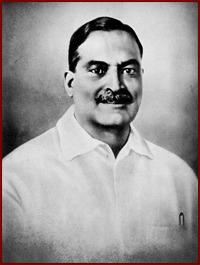
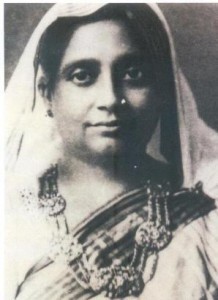 पश्चिम बंगाल के तत्कालीन कांग्रेसी मुख्यमंत्री डा. विधान चन्द्र राय, डा. मुकर्जी की पूजनीय माताजी श्रीमती जोगोमाया देवी और देश के सभी भागों से अनेकानेक प्रबुध्द नागरिकों ने प्रधानमंत्री कार्यालय को टेलीग्राम और पत्र इत्यादि भेजकर न केवल अपना दु:ख और आक्रोश प्रकट किया अपितु तुरंत जांच कराने की भी मांग की कि यह त्रासदी कैसे घटी। इस राष्ट्रीय आक्रोश का कोई नतीजा नहीं निकला। इस असाधारण व्यक्ति की मृत्यु आज भी रहस्य बनी हुई है। ऐसी किसी अन्य घटना के संदर्भ में, एक औपचारिक जांच सर्वदा गठित की जाती रही हैं। लेकिन इस मामले में नहीं। कोई नहीं कह सकता कि क्या यह मात्र अपराधिक असंवेदनशीलता का मामला है या वास्तव में अपराध बोध का भाव!
पश्चिम बंगाल के तत्कालीन कांग्रेसी मुख्यमंत्री डा. विधान चन्द्र राय, डा. मुकर्जी की पूजनीय माताजी श्रीमती जोगोमाया देवी और देश के सभी भागों से अनेकानेक प्रबुध्द नागरिकों ने प्रधानमंत्री कार्यालय को टेलीग्राम और पत्र इत्यादि भेजकर न केवल अपना दु:ख और आक्रोश प्रकट किया अपितु तुरंत जांच कराने की भी मांग की कि यह त्रासदी कैसे घटी। इस राष्ट्रीय आक्रोश का कोई नतीजा नहीं निकला। इस असाधारण व्यक्ति की मृत्यु आज भी रहस्य बनी हुई है। ऐसी किसी अन्य घटना के संदर्भ में, एक औपचारिक जांच सर्वदा गठित की जाती रही हैं। लेकिन इस मामले में नहीं। कोई नहीं कह सकता कि क्या यह मात्र अपराधिक असंवेदनशीलता का मामला है या वास्तव में अपराध बोध का भाव!
****
हालांकि , रहस्यमय परिस्थितियों में डा. मुकर्जी की मृत्यु को लेकर उमड़े व्यापक जनाक्रोश के चलते अगले कुछ महीनों में घटनाक्रम तेजी से बदला जिससे राष्ट्रीय एकीकरण की प्रक्रिया महत्वपूर्ण रुप से आगे बढ़ी।
सर्वप्रथम और सर्वाधिक महत्वपूर्ण रहा परमिट सिस्टम की समाप्ति।
उस समय तक न तो सर्वोच्च न्यायालय , न ही निर्वाचन आयोग और न ही नियंत्रक एवं महालेखाकार के क्षेत्राधिकार में जम्मू एवं कश्मीर राज्य नहीं था। इन तीनों संवैधानिक संस्थाओं का क्षेत्राधिकार जम्मू एवं कश्माीर पर भी लागू किया गया। उस समय तक राज्य के मुख्यमंत्री को वजीरे-आजम और राज्य के प्रमुख को सदरे-रियासत कहा जाता था। सैध्दान्तिक रुप से, न तो भारत के राष्ट्रपति और न ही प्रधानमंत्री का इस राज्य पर कोई अधिकार था।
डा. मुकर्जी के बलिदान ने इस स्थिति में भी बदलाव लाया। राज्य में प्रधानमंत्री मुख्यमंत्री बन गये , सदरे-रियासत राज्यपाल बन गये और राष्ट्रपति एवं प्रधानमंत्री के औपचारिक अधिकार जम्मू एवं कश्मीर राज्य पर भी लागू हुए।
एक प्रकार से , इस प्रेरक नारे की तीन मांगों में से एक, दो प्रधान एक हो गए, और यद्यपि दो निशान अभी भी हैं मगर राष्ट्रीय तिरंगा राज्य में ऊपर लहराता है।
इसके अलावा , दो प्रधानमंत्री एक बने, दो सर्वोच्च न्यायालय एक हुए, दो निर्वाचन प्राधिकरण एक हुए - यह सब डा. श्यामा प्रसाद के बलिदान के कारण हुआ।
देश व्यग्रता से उस दिन की प्रतीक्षा कर रहा है जब धारा 370 समाप्त होगी और दो विधान भी एक हो जाएंगे!
लालकृष्ण आडवाणी
नई दिल्ली
23 जून, 2013

June 22, 2013
INDEPENDENT INDIA’S FIRST MARTYR FOR NATIONAL INTEGRATION
Today is 23rd June. Exactly sixty years ago, in 1953, on this day the country received from J & K State the heart-breaking news that Dr. Syama Prasad Mookerji was no more.
 I vividly remember how that night around 2.00 AM or so I got up from sleep when I heard the sound of someone wailing and weeping just outside our Jana Sangh office at Jaipur, and shouting at the top of his voice “Advani ji, they have killed our Dr. Mookerji !”. It was a local journalist who had got the news on his ticker and so, unable to restrain himself rushed to our office to share his sense of shock with me.
I vividly remember how that night around 2.00 AM or so I got up from sleep when I heard the sound of someone wailing and weeping just outside our Jana Sangh office at Jaipur, and shouting at the top of his voice “Advani ji, they have killed our Dr. Mookerji !”. It was a local journalist who had got the news on his ticker and so, unable to restrain himself rushed to our office to share his sense of shock with me.
The news was a shock for millions. Earlier, during the year Dr. Syama Prasad’s newly launched party, the Bharatiya Jana Sangh, had had its first All India Session at Kanpur. I had the privilege of being one of the delegates from Rajasthan who attended this session. It was here that Dr. Mookerji had given to the thousands of delegates assembled at Phool Bagh this scintillating slogan - “Ek desh mein do pradhan, do nishan, do vidhan, nahin chalenge, nahin chalenge” (Ours is one country: we can’t have here two Presidents, two Flags, and two Constitutions.)
It was at Kanpur that the party resolved to launch its first nationwide movement – for the complete integration of Jammu and Kashmir State with India. Dr. Mookerji decided to lead the movement from the front – by personally defying the permit system introduced by Sheikh Abdullah. He also decided to go to different parts of the country to mobilize public opinion in support of the movement. In this pre-campaign rail tour of his, he asked Shri Vajpayee to accompany him.
I was at Kota, in Rajasthan, those days. When I learnt that Dr. Mookerji and Atalji were passing through Kota Junction, I met them at the station. I could never have imagined that that was destined to be the last time, I would be seeing this great founder of our party, Dr. Syama Prasad.
 On May 8, 1953, Dr. Mookerji left Delhi for Punjab en route to Jammu. At Amritsar, a massive crowd of over 20,000 gave him a rousing reception. His journey from Amritsar to Pathankot, and thence to Madhopur also was like a victory procession. Madhopur is a small town some twelve kms. away from the army cantonment of Pathankot. Madhopur is situated on the banks of the Ravi, the river that separates Punjab from Jammu and Kashmir State. Dr. Mookerji accompanied by Atalji boarded a jeep to cross the bridge over the Ravi in order to enter Jammu-Kashmir. Midway on the bridge, the jeep was halted by a posse of J&K policemen and Dr. Mookerji was asked whether he had a permit with him. Dr. Mookerji replied in the negative, and said that under the Indian Constitution every Indian citizen had a right to travel to any part of the country. When the police arrested him, he said to Vajpayeeji: “Please go back and tell the people that I have entered Jammu and Kashmir State without a permit, though as a prisoner.”
On May 8, 1953, Dr. Mookerji left Delhi for Punjab en route to Jammu. At Amritsar, a massive crowd of over 20,000 gave him a rousing reception. His journey from Amritsar to Pathankot, and thence to Madhopur also was like a victory procession. Madhopur is a small town some twelve kms. away from the army cantonment of Pathankot. Madhopur is situated on the banks of the Ravi, the river that separates Punjab from Jammu and Kashmir State. Dr. Mookerji accompanied by Atalji boarded a jeep to cross the bridge over the Ravi in order to enter Jammu-Kashmir. Midway on the bridge, the jeep was halted by a posse of J&K policemen and Dr. Mookerji was asked whether he had a permit with him. Dr. Mookerji replied in the negative, and said that under the Indian Constitution every Indian citizen had a right to travel to any part of the country. When the police arrested him, he said to Vajpayeeji: “Please go back and tell the people that I have entered Jammu and Kashmir State without a permit, though as a prisoner.”
It is noteworthy that at Pathankot, senior police officials of Punjab had called on Dr. Syama Prasad and told him that they had instructions from the Punjab Government that even if Dr. Mookerji did not have a permit with him he may be allowed to go past Madhopur on to the bridge.
Evidently, this was a joint operation of the Union Government as well as the J&K State Government that Dr. Mookerji should be kept a prisoner in J&K State, and not in Punjab.
The upshot of this planned operation was a devastating calamity for the country. On June 23, 1953 the nation was shocked to learn that Dr. Mookerji, who had been kept in detention in a house at Srinagar had suddenly fallen ill, and after a brief illness had passed away !

 Dr. Bidhan Chandra Roy, Congress Chief Minister of West Bengal, Dr. Mookerji’s venerable mother Smt Jogomaya Devi, and many many more eminent citizens from all parts of the country flooded the Prime Minister’s office with telegrams, letters etc. expressing not just their shock and anguish but urging that an immediate enquiry be ordered as to how the tragedy had happened. The nation’s anguish elicited no response. The death of this titan remains a mystery till today. In other similar situations, a formal enquiry has almost invariably been instituted. But not in this case. One cannot say whether it was just criminal insensitivity, or actually a feeling of guilt !
Dr. Bidhan Chandra Roy, Congress Chief Minister of West Bengal, Dr. Mookerji’s venerable mother Smt Jogomaya Devi, and many many more eminent citizens from all parts of the country flooded the Prime Minister’s office with telegrams, letters etc. expressing not just their shock and anguish but urging that an immediate enquiry be ordered as to how the tragedy had happened. The nation’s anguish elicited no response. The death of this titan remains a mystery till today. In other similar situations, a formal enquiry has almost invariably been instituted. But not in this case. One cannot say whether it was just criminal insensitivity, or actually a feeling of guilt !
***
However, the intense public indignation aroused by the passing away of Dr. Mookerji in suspicious circumstances triggered off a series of developments in the next few months which significantly promoted the process of national integration.
First and foremost, the permit system was abolished.
Until this time, neither the Supreme Court, nor the Election Commission, nor the Comptroller and Auditor General had any jurisdiction over Jammu and Kashmir State. The authority of these three constitutional bodies was extended to the State. Till then, the Chief Minister of the State was called the Prime Minister, and the Head of State the Sadar-e-Riyasat. In theory, thus, neither the President nor the Prime Minister of the Union had authority over the State.
Dr. Mookerji’s martyrdom brought about a change in this situation also. Sheikh Abdullah became Chief Minister, Sadar-e-Riyasat became Governor, and the President and P.M.’s formal authority got extended to Jammu and Kashmir State also.
In a way, of the three strands in the inspiring slogan, two pradhans became one, and though two nishans continue still, the National Tricolour started flying in the State in a superior position.
Besides, two Prime Ministers became one, two Apex Courts became one, two Election authorities became one, two principal Auditors became one – all because of Dr. Syama Prasad’s sacrifice.
The country eagerly awaits the day when Art. 370 would be repealed, and the two vidhans also would become one !
L.K. Advani
New Delhi
23 June, 2013

June 19, 2013
साम्राज्य के पाप
डेविड एम. एण्डरसन, यूनिवर्सिटी ऑफ वारबिक में अफ्रिकी इतिहास के प्रोफेसर हैं। इन्टरनेशनल हेराल्ड ट्रिब्यून के 14 जून, 2013 के संस्करण में इन प्रोफेसर महोदय का एक महत्वपूर्ण लेख ”एटोनिंग फॉर दि सिन्स ऑफ एम्पायर” शीर्षक से प्रकाशित हुआ है।
लेख का सार यह है कि ”गत् सप्ताह ब्रिटिश सरकार ने एक ऐतिहासिक फैसले में 1950 के दशक में मऊ मऊ विद्रोह के दौरान जिन 5228 केनयाइयों को बंदी बनाने के समय प्रताड़ित किया गया उन्हें मुआवजा देने का निर्णय किया है। प्रत्येक दावेदार को लगभग 2670 पौण्ड (करीब 4000 डॉलर) मिलेंगे।”
डेविडसन की टिप्पणी है: ”पैसा नगण्य है। लेकिन इससे जो सिध्दान्त स्थापित हुआ है, और जो इतिहास फिर से लिखा गया है, वह अथाह है।”
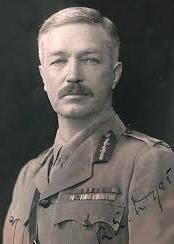
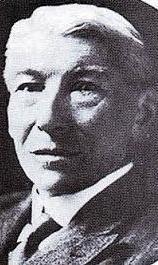 भारत भी ब्रिटिश साम्राज्य के प्रमुख उपनिवेशों में से एक रहा है। और यहां पर अनगिनत गुनाह किए गए। तबकी सरकार द्वारा किया सर्वाधिक बर्बर अपराध था जलियांवाला बाग का कत्लेआम। यह कत्लेआम 13 अप्रैल (रविवार), 1919 को अमृतसर में बैशाखी के दिन किया गया। गोली चलाने का आदेश ब्रिगेडियर-जनरल इ.एच. डायर ने दिया। डायर का मानना था कि कोई बड़ी बगावत होने वाली है।
भारत भी ब्रिटिश साम्राज्य के प्रमुख उपनिवेशों में से एक रहा है। और यहां पर अनगिनत गुनाह किए गए। तबकी सरकार द्वारा किया सर्वाधिक बर्बर अपराध था जलियांवाला बाग का कत्लेआम। यह कत्लेआम 13 अप्रैल (रविवार), 1919 को अमृतसर में बैशाखी के दिन किया गया। गोली चलाने का आदेश ब्रिगेडियर-जनरल इ.एच. डायर ने दिया। डायर का मानना था कि कोई बड़ी बगावत होने वाली है।
यह जानकारी मिलने पर कि 15 से 20 हजार की संख्या में लोग जलियांवाला बाग मैदान में इक्ट्ठे हो गए हैं तो डायर 50 गोरखा बंदूकधारियों को वहां एकत्रित हुए पुरुषों, महिलाओं और बच्चों पर फायरिंग करने को कहा गया। फायरिंग तब तक जारी रही जब तक उनके पास का गोलियों का स्टॉक समाप्त नहीं हो गया। डायर ने स्वयं बताया कि 1650 राऊण्ड गोलियां चलाई गई: ब्रिटिश अधिकारिक सूत्रों के मुताबिक 379 लोग मारे गए, जबकि लगभग 1000 लोग घायल हुए। भारतीय राष्ट्रीय क्रांग्रेस के अनुमान के मुताबिक शिकार हुए लोगों की संख्या 1500 से ज्यादा थी, जिसमें से लगभग 1000 लोग मारे गए।
जनरल डायर द्वारा अपने उच्च अधिकारियों को यह सूचना देने कि उन्हें ‘एक क्रांतिकारी सेना से मुकाबला करना पड़ रहा है,’ के बाद पंजाब के ब्रिटिश लेफ्टिनेंट-गवर्नर, माइकेल ओ‘डायर (Michael O’Dwyer) ने ब्रिगेडियर डायर को भेजे टेलीग्राम में लिखा। ”आपकी कार्रवाई ठीक है और लेफ्टिनेंट गर्वनर इसे स्वीकृति देते हैं।” ओ‘डायर ने अनुरोध किया कि अमृतसर और अन्य क्षेत्रों में मार्शल लॉ लागू कर दिया जाए, और इसे वायसराय लार्ड चेम्सफोर्ड ने लागू कर दिया।
*
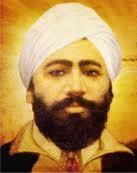 13 मार्च, 1940 को लंदन के केस्टन हॉल में, भारत के सुनाम के रहने वाले एक क्रांतिकारी ऊधम सिंह, जो अमृतसर की घटनाओं का प्रत्यक्षदर्शी या और स्वयं वहां घायल हो गया था, ने पंजाब के ब्रिटिश लेफ्टिनेंट-गवर्नर माइकेल ओ‘डायर की गोली मार कर हत्या कर दी। अमृतसर कत्लेआम के समय ओ‘डायर वहां का गर्वनर था ही, जिसने न केवल डायर की कार्रवाई को स्वीकृति दी अपितु माना जाता है कि वह इसका मुख्य सूत्रधार भी था। ब्रिगेडियर-जनरल डायर स्वयं 1927 में मर गया था।
13 मार्च, 1940 को लंदन के केस्टन हॉल में, भारत के सुनाम के रहने वाले एक क्रांतिकारी ऊधम सिंह, जो अमृतसर की घटनाओं का प्रत्यक्षदर्शी या और स्वयं वहां घायल हो गया था, ने पंजाब के ब्रिटिश लेफ्टिनेंट-गवर्नर माइकेल ओ‘डायर की गोली मार कर हत्या कर दी। अमृतसर कत्लेआम के समय ओ‘डायर वहां का गर्वनर था ही, जिसने न केवल डायर की कार्रवाई को स्वीकृति दी अपितु माना जाता है कि वह इसका मुख्य सूत्रधार भी था। ब्रिगेडियर-जनरल डायर स्वयं 1927 में मर गया था।
ऊधम सिंह की कार्रवाई की भारत में अमृत बाजार पत्रिका जैसे राष्ट्रवादी समाचारपत्रों ने सराहना की। आम लोगों और क्रांतिकारियों ने इसे गौरवान्वित कदम कहा। दुनिया भर में अधिकांश समाचारपत्रों ने इस अवसर पर जलियांवाला बाग के कत्लेआम को स्मरण करते हुए माइकेल ओ‘डायर को इस कत्लेआम का जिम्मेदार ठहराया। ऊधम सिंह को ‘स्वतंत्रता के लिए लड़ने वाला‘ और उसके कदम को लंदन के दि टाइम्स तक ने इसे ”भारतीय लोगों के दबे हुए आक्रोश की एक अभिव्यक्ति” के रुप में वर्णित किया।
ऊधम सिंह को गवर्नर ओ‘डायर की हत्या के आरोप में 31 जुलाई, 1940 को फांसी दे दी गई। उस समय जवाहरलाल नेहरु और महात्मा गांधी सहित अनेकों ने ऊधम सिंह के कदम को नादान परन्तु साहसी करार दिया। हालांकि 1952 में नेहरु (तब के प्रधानमंत्री) ने ऊधम सिंह को निम्न शब्दों से सम्मानित किया (डेली प्रताप के अनुसार):
”मैं शहीदे-आजम ऊधम सिंह को सम्मानपूर्वक सलाम करता हूं जिसने फांसी के फंदे को गले लगाया ताकि हम स्वतंत्र रह सकें।”
*
ब्रिटेन के वर्तमान प्रधानमंत्री डेविड कैमरुन फरवरी, 2013 में तीन दिवसीय भारत की यात्रा पर आए थे और इस अवधि में वह अमृतसर भी गए। यहां वह न केवल स्वर्ण मंदिर गए अपितु जलियांवाला बाग के कत्लेआम की जगह पर जानेवाले पहले ब्रिटिश प्रधानमंत्री बने।
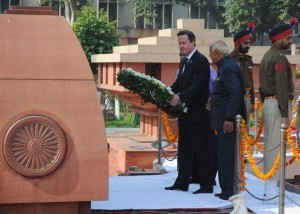
उस मैदान पर जहां अब शहीद स्मारक है, पर डेविड कैमरुन ने पुष्प अर्पित किए और 1920 में तत्कालीन वॉर सेक्रेटरी, विंस्टन चर्चिल द्वारा कहे गए शब्दों का स्मरण किया जिसमें कत्लेआम को ‘सरासर गलत‘ कहा गया था। प्रधानमंत्री ने स्वयं टिप्पणी की कि यह कत्लेआम ”ब्रिटिश इतिहास में एक अत्यधिक शर्मनाक घटना है।”
लालकृष्ण आडवाणी
नई दिल्ली
19 जून, 2013

June 18, 2013
SINS OF THE EMPIRE
David M. Anderson is a professor of African History at the British University of Warwick. The International Herald Tribune June 14, 2013 carries a significant article by this professor, titled “Atoning for the sins of empire.”
The opening paragraph contains the substance of the article. It says: “The British do not torture. At least, that is what we in Britain have always liked to think. But not anymore. In a historic decision last week, the British Government agreed to compensate 5228 Kenyans who were tortured and abused while detained during the Mau Mau rebellion of the 1950’s. Each claimant will receive around £ 2,670 (about $ 4000).”
Davidson comments: “The money is paltry. But the principle it establishes, and the history it rewrites, is profound.”

 One of the principal colonies of the British Empire used to be India. And the sins committed here were myriads. One of the most horrendous of the crimes committed by the then Government was the Jallianwala Bagh massacre. The massacre took place at Amritsar on Baisakhi Day, Sunday 13 April, 1919. The shooting was ordered by Brigadier-General E.H. Dyer. Dyer was convinced that a major insurrection was about to take place.
One of the principal colonies of the British Empire used to be India. And the sins committed here were myriads. One of the most horrendous of the crimes committed by the then Government was the Jallianwala Bagh massacre. The massacre took place at Amritsar on Baisakhi Day, Sunday 13 April, 1919. The shooting was ordered by Brigadier-General E.H. Dyer. Dyer was convinced that a major insurrection was about to take place.
On learning that a crowd of 15000 to 20000 people had assembled at the Jallianwala Bagh ground, Dyer went there with 50 Gurkha riflemen. From a raised bank at the ground, these riflemen were asked to fire at the men, women and children assembled. Firing went on continuously until the ammunition with the riflemen was exhausted. Dyer himself revealed that 1650 rounds were fired. Official British sources gave a figure of 379 identified dead, with another approximately 1000 wounded. The casualty number estimated by the Indian National Congress was more than 1500, with approximately 1000 dead.
After General Dyer reported to his superiors that he had been “confronted by a revolutionary army”, the British Lieutenant-Governor of Punjab, Michael O’Dwyer wrote in a telegram sent to Dyer. “Your action is correct and the Lieutenant Governor approves.” O’Dwyer requested that martial law should be imposed upon Amritsar and other areas, and this was granted by Viceroy Lord Chelmsford.
*
 On 13 March 1940, at Caxton Hall in London, Udham Singh, an Indian independence activist from Sunam who had witnessed the events in Amritsar and was himself wounded at Amritsar, shot and killed Michael O’Dwyer, the British Lieutenant-Governor of Punjab at the time of the massacre, who had not only approved Dyer’s action, but was believed to be the main planner. Dyer himself had died in 1927.
On 13 March 1940, at Caxton Hall in London, Udham Singh, an Indian independence activist from Sunam who had witnessed the events in Amritsar and was himself wounded at Amritsar, shot and killed Michael O’Dwyer, the British Lieutenant-Governor of Punjab at the time of the massacre, who had not only approved Dyer’s action, but was believed to be the main planner. Dyer himself had died in 1927.
The action by Udham Singh was hailed in India by nationalist newspapers like Amrita Bazar Patrika. The common people and revolutionaries glorified his action. Much of the press worldwide recalled on this occasion the story of Jallianwala Bagh, and accused Michael O’Dwyer as having been responsible for the massacre. Udham Singh was termed a “fighter for freedom” and his action was referred to even in The Times of London as “an expression of the pent-up fury of the down-trodden Indian People”.
Udham Singh was hanged for the murder of Governor O’Dwyer on 31 July 1940. At that time, many, including Jawaharlal Nehru and Mahatma Gandhi, described the action of Udham Singh as senseless but courageous. In 1952, however, Nehru (by then Prime Minister) honoured Udham Singh with the following statement (as quoted by Daily Pratap):
“I salute Shaheed-i-Azam Udham Singh with reverence who had kissed the noose so that we may be free.”
* * *
David Cameron, presently Prime Minister of Britain visited India in February 2013, and during his three days in the country visited Amritsar. Here, he went not only to the Golden Temple but became the first British Prime Minister to go to the massacre site of Jallianwala Bagh grounds.

On the ground now is a martyrs’ memorial where David Cameron placed a wreath, recalled that in 1920 Winston Churchill, who was then War Secretary, had described the massacre as ‘monstrous’. The P.M. himself remarked that this massacre was “a deeply shameful event in British history”.
L.K. Advani
New Delhi
19 June, 2013

June 10, 2013
विश्वारूप : एक शानदार फिल्म
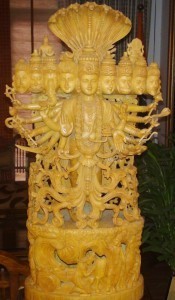 पृथ्वीराज रोड के हमारे निवास पर चंदन की लकड़ी में ऊकेरी गई एक अत्यन्त मनोहारी शिल्पाकृति रखी हुई है जिसमें श्री कृष्ण कुरूक्षेत्र में अर्जुन को गीताज्ञान दे रहे हैं, और इस प्रक्रिया में वह उन्हें अपने विश्वारूप दर्शन दे रहे हैं।
पृथ्वीराज रोड के हमारे निवास पर चंदन की लकड़ी में ऊकेरी गई एक अत्यन्त मनोहारी शिल्पाकृति रखी हुई है जिसमें श्री कृष्ण कुरूक्षेत्र में अर्जुन को गीताज्ञान दे रहे हैं, और इस प्रक्रिया में वह उन्हें अपने विश्वारूप दर्शन दे रहे हैं।
इस मूर्ति, जिसे चिकमंगलूर (कर्नाटक) के कलाकार ने बनाया है, की ज्यादा महत्वपूर्ण विशेषता यह है कि इस विश्वारूप के पार्श्व भाग में द्रोपदी चीरहरण, और बाण शैय्या पर पड़े भीष्म पितामह पाण्डवों को उपदेश देने जैसे महाभारत के अनेक दृश्य न केवल ऊकेरे गए हैं। मत्स्यावतार और कुरूमावतार के सभी दशावतारों से लेकर कृष्ण और काल्की तक शामिल हैं।
एक पखवाड़े या उससे कुछ समय पूर्व मुझे कुछ मीडिया रिपोर्ट देखने को मिलीं जिसमें बताया गया था कि तमिलनाडु के उत्कृष्ट फिल्म निर्माता और निदेशक कमल हासन द्वारा विश्वरूपम (तमिल में) और विश्वारूप (हिन्दी) शीर्षक से बनाई गई फिल्म सम्बन्धी कुछ विवाद पैदा हुआ है। नतीजा यह हुआ कि तमिलनाडू सरकार ने पहले फिल्म को प्रतिबंधित किया, और बाद में कुछ दृश्यों को हटाकर इसके प्रदर्शन की अनुमति दी। जबसे मैंने यह समाचार पढ़ा तब से मुझे इस फिल्म को देखने की इच्छा हुई।
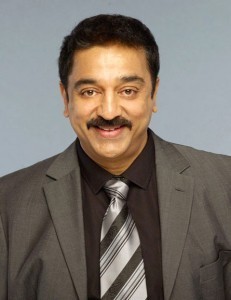 पिछले सप्ताह, मुझे कमल हासन का फोन आया जिसमें उन्होंने स्वयं मुझे सूचित किया कि वह कुछ दिनों के लिए दिल्ली आ रहे हैं और जब वह यहां होंगे तब किसी भी दिन आप मेरी फिल्म देखना चाहें, तो मुझे अच्छा लगेगा।
पिछले सप्ताह, मुझे कमल हासन का फोन आया जिसमें उन्होंने स्वयं मुझे सूचित किया कि वह कुछ दिनों के लिए दिल्ली आ रहे हैं और जब वह यहां होंगे तब किसी भी दिन आप मेरी फिल्म देखना चाहें, तो मुझे अच्छा लगेगा।
इसलिए, 3 जून को अपने परिवार और कुछ मित्रों के साथ मुझे इस शानदार फिल्म को देखने का मौका मिला, फिल्म की विषयवस्तु और तकनीकी विशेषता को लेकर मैं मानता हूं कि पिछले कुछ वर्षों में मैंने जो फिल्में देखी हैं, उनमें यह एक सर्वोत्तम फिल्म है।
फिल्म एक जासूसी थ्रिलर है जिसे लिखा भी है कमल हासन ने, और यह मुख्य रुप से तीन देशों-अमेरिका, भारत और जार्डन में इसे फिल्माया गया है।
फिल्म की स्क्रीनिंग के दो दिन बाद कमल हासन सिंधी कड़ी और चावल का स्वाद लेने के लिए हमारे घर आए। रात्रिभोज के पश्चात् मैंने उन्हें कराची में अपने स्कूली दिनों की रोचक घटना सुनाई।
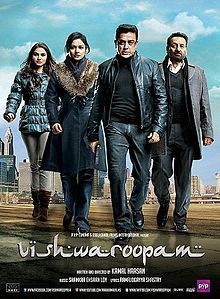 यह कहानी दूसरे विश्व युध्द के दौरान एडॉल्फ हिटलर और बेंटिओ मुसोलिनी की भेंट के बारे में है, जिसमें हिटलर, इटली के सुप्रीमो को बताते हैं कि दोनों द्वारा किए गए पापों की उन्हें मृत्यु के बाद काफी कीमत चुकानी होगी। जब मुसोलिनी ने अपने मित्र को बताया कि जब उनका अंतिम समय आएगा तो वह वेटिकन जाकर पोप से सहायता मांगेगे, जिनके पास स्वर्ग जाने का पास माना जाता है। हिटलर ने उन्हें कहा कि वे पोप को उनका भी नाम प्रस्तावित करें। इस किस्से के साथ कैंची का एक जोड़ा और कागज का टुकड़ा भी दिखाया जाता था जिसमें कहानी के अंत में होता यह था कि दोनों फासिस्ट नेता नरक में पहुंच गए हैं और सिर्फ पोप ही स्वर्ग पहुंचते हैं।
यह कहानी दूसरे विश्व युध्द के दौरान एडॉल्फ हिटलर और बेंटिओ मुसोलिनी की भेंट के बारे में है, जिसमें हिटलर, इटली के सुप्रीमो को बताते हैं कि दोनों द्वारा किए गए पापों की उन्हें मृत्यु के बाद काफी कीमत चुकानी होगी। जब मुसोलिनी ने अपने मित्र को बताया कि जब उनका अंतिम समय आएगा तो वह वेटिकन जाकर पोप से सहायता मांगेगे, जिनके पास स्वर्ग जाने का पास माना जाता है। हिटलर ने उन्हें कहा कि वे पोप को उनका भी नाम प्रस्तावित करें। इस किस्से के साथ कैंची का एक जोड़ा और कागज का टुकड़ा भी दिखाया जाता था जिसमें कहानी के अंत में होता यह था कि दोनों फासिस्ट नेता नरक में पहुंच गए हैं और सिर्फ पोप ही स्वर्ग पहुंचते हैं।
कमल हासन ने इस किस्से और कागज के दिखाए गए प्रदर्शन का आनन्द लिया और मुझसे पूछा: क्या आपने ”ग्रे वॉल्फ: दि एस्केप ऑफ एडोल्फ हिटलर” पुस्तक पढ़ी है। पुस्तक के सह लेखक हैं साइमन डूंस्टान जोकि प्रसिध्द लेखक, फिल्म निर्माता और सैन्य इतिहास के क्षेत्र के जाने माने फोटोग्राफर; और तीस वर्षों से अधिक बीबीसी, स्काई न्यूज और रॉयटर के प्रसिध्द टेलीविज़न पत्रकार गेर्राड विलियम्स।
टेलपीस (पश्च्यलेख)
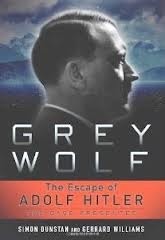 कमल हासन ने जिस पुस्तक का वायदा किया था, वह उन्होंने मुझे भेजी। 350 पृष्ठों वाली यह पुस्तक काफी शोधपरक है। दोनों लेखकों ने मिलकर सत्रह बार अर्जेन्टीना का दौरा किया, जहां माना जाता है कि 1962 तक वह वहां रहा।
कमल हासन ने जिस पुस्तक का वायदा किया था, वह उन्होंने मुझे भेजी। 350 पृष्ठों वाली यह पुस्तक काफी शोधपरक है। दोनों लेखकों ने मिलकर सत्रह बार अर्जेन्टीना का दौरा किया, जहां माना जाता है कि 1962 तक वह वहां रहा।
इस पुस्तक का पिछला आवरण इस रुप में सार प्रस्तुत करता है:
शोधपरक पत्रकार गेर्राड विलियम्स तथा सैन्य इतिहासकार साइमन डूंस्टान ने वर्षों के अपने शोध पर यह निष्कर्ष निकाला कि बर्लिन से एडॉल्फ हिटलर का पलायन-ऑपरेशन फ्यूरलैण्ड-को नाजियों ने 1943 से ही अत्यन्त गोपनीयता से तैयार किया था। इस सम्बन्ध में काफी प्रत्यक्षदर्शियों और साक्ष्यों के अनुसार यह आपरेशन सफल रहा और हिटलर दक्षिण अमेरिका को पलायन कर गया जहां वह 1962 में अपनी वास्तविक मृत्यु तक रहा।
लालकृष्ण आडवाणी
नई दिल्ली
9 जून, 2013

June 8, 2013
VISHWAROOP : A WONDERFUL FILM
 A remarkable piece of sandalwood carving on display at our Prithviraj Road residence is of Shri Krishna administering Geetagnyan to Arjuna at Kurukshetra, and in that process giving him a darshan of His Vishwaroop.
A remarkable piece of sandalwood carving on display at our Prithviraj Road residence is of Shri Krishna administering Geetagnyan to Arjuna at Kurukshetra, and in that process giving him a darshan of His Vishwaroop.
What is even more significant about this carving is the fact that the artist, hailing from Chikmangloor (Karnataka), has depicted on the back side of this excellent Vishwaroop carving not only several other scenes from the Mahabharata, like Draupadi Cheer Haran, and Bhishma Pitamah on his bed of arrows, sermonizing to the Pandavas, but also all the Dashavataras, from Matsyavatara andKurmavatara to Krishna and Kalki.
A fortnight or so back I had seen in the media reports that a film produced and directed by Kamal Haasan, outstanding film maker of Tamilnadu, titled Vishwaroopam (in Tamil) and Vishwaroop (in Hindi) had precipitated some controversy. The result was that the Tamilnadu Government had first banned the film, and later on permitted it with some scenes muted. Ever since I had read these reports I had had a desire to see the film.
 Last week, I had a welcome phone call from Kamal Haasan himself informing me that he was coming to Delhi for a few days and that on any of the days he was here he would like me to see his film.
Last week, I had a welcome phone call from Kamal Haasan himself informing me that he was coming to Delhi for a few days and that on any of the days he was here he would like me to see his film.
On June 3rd, therefore, along with my family and some friends I had occasion to see this wonderful film, which I reckon, in both content and technical quality, is one of the best films I have seen in years.
The film is a spy thriller scripted also by Kamal Haasan, and shot mainly in three countries – in the U.S.A., in India and in Jordan.
Two days after the screening of the film Kamal Haasan came to our home for Sindhi curry and rice. After dinner I recounted to him an anecdote I had heard during my school days in Karachi.
 The story is about a meeting Adolf Hitler and Benito Mussolini had during the Second World War, in which Hitler tells the Italian Supremo that the sins committed by the two of them would prove very costly for them after death. When Mussolini said to his friend that so far as he was concerned when his own end came he would go to the Vatican and seek help from the Pope who is believed to have a Pass for Heaven. Hitler asked him to commend to the Pope his name also. This anecdote is accompanied by a demonstrative exercise with a pair of scissors, and a sheet of paper, in which the story ends up with both the two Fascist leaders landing in Hell, and only the Pope reaching Heaven.
The story is about a meeting Adolf Hitler and Benito Mussolini had during the Second World War, in which Hitler tells the Italian Supremo that the sins committed by the two of them would prove very costly for them after death. When Mussolini said to his friend that so far as he was concerned when his own end came he would go to the Vatican and seek help from the Pope who is believed to have a Pass for Heaven. Hitler asked him to commend to the Pope his name also. This anecdote is accompanied by a demonstrative exercise with a pair of scissors, and a sheet of paper, in which the story ends up with both the two Fascist leaders landing in Hell, and only the Pope reaching Heaven.
Kamal Haasan enjoyed my demonstration, and was provoked to ask me : Have you read the Book “Grey Wolf: The Escape of Adolf Hitler” The Book is co-authored by Simon Dunstan, prominent author, film maker and photographer in the field of military history and Gerard Williams, renowned television journalist for over thirty years with the BBC, Sky News and Reuters.
TAILPIECE
 Kamal Haasan, has sent me the book that he promised. The 350-page book is extremely well researched. Together, the two authors undertook seventeen research trips to Argentina where Hitler, according to them lived until 1962.
Kamal Haasan, has sent me the book that he promised. The 350-page book is extremely well researched. Together, the two authors undertook seventeen research trips to Argentina where Hitler, according to them lived until 1962.
The back cover of this book sums up :
Based on years of research investigative journalist Gerard Williams and military historian Simon Dunstan believe that the escape of Adolf Hitler from Berlin & Operation Feuerland & was meticulously planned by the Nazis from 1943 onward. There is considerable testimony and evidence that suggests the operation was a success and that Hitler escaped to South America, where he lived until his actual death in 1962.
L.K. Advani
New Delhi
9 June 2013

June 4, 2013
गुआंतानामो बे बंदीगृह सम्बन्धी ओबामा की दुविधा
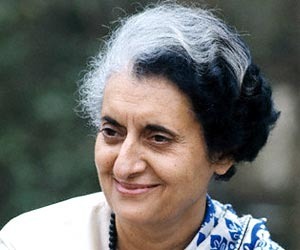 श्रीमती इंदिरा गांधी देश की एक प्रमुख प्रधानमंत्री रहीं जिनके नेतृत्व में सन् 1971 के युध्द में भारत ने पाकिस्तान पर निर्णायक विजय हासिल की, और इसी के चलते पाकिस्तान का विभाजन हुआ और एक नए राष्ट्र बंगलादेश का जन्म हुआ। देश के विभिन्न प्रधानमंत्रियों की बैलेंसशीट की चर्चा करते हुए कुछ समय पूर्व के अपने ब्लॉग में मैंने लिखा था कि हालांकि बंगलादेश का निर्माण श्रीमती गांधी के कार्यकाल की एक सकारात्मक घटना थी परन्तु 1975-77 के दौरान आपातकालीन शक्तियों का खुला दुरुपयोग जिसके चलते स्वतंत्रता प्राप्ति के पश्चात् से देश की महानतम उपलब्धि - लोकतंत्र, समाप्ति के कगार पर पहुंचा, श्रीमती गांधी की बैंलेसशीट को प्रशंसायोग्य नहीं ठहराता।
श्रीमती इंदिरा गांधी देश की एक प्रमुख प्रधानमंत्री रहीं जिनके नेतृत्व में सन् 1971 के युध्द में भारत ने पाकिस्तान पर निर्णायक विजय हासिल की, और इसी के चलते पाकिस्तान का विभाजन हुआ और एक नए राष्ट्र बंगलादेश का जन्म हुआ। देश के विभिन्न प्रधानमंत्रियों की बैलेंसशीट की चर्चा करते हुए कुछ समय पूर्व के अपने ब्लॉग में मैंने लिखा था कि हालांकि बंगलादेश का निर्माण श्रीमती गांधी के कार्यकाल की एक सकारात्मक घटना थी परन्तु 1975-77 के दौरान आपातकालीन शक्तियों का खुला दुरुपयोग जिसके चलते स्वतंत्रता प्राप्ति के पश्चात् से देश की महानतम उपलब्धि - लोकतंत्र, समाप्ति के कगार पर पहुंचा, श्रीमती गांधी की बैंलेसशीट को प्रशंसायोग्य नहीं ठहराता।
मैं इसका स्मरण इसलिए करा रहा हूं कि ‘टाइम‘ पत्रिका के ताजा अंक (10 जून, 2013) की आवरण कथा में राष्ट्रपति ओबामा की दु:खदायी दुविधा का उल्लेख किया गया है कि अमेरिका के बदनाम हो चुके बंदी कैंप-गुआंतानामो बे - जहां बुश प्रशासन ने सन् 2001 से चलाए गए आतंकवाद विरोधी अभियानों के तहत गिरफ्तार किए गए हजारों बंदियों को रखा गया है, का क्या किया जाए।
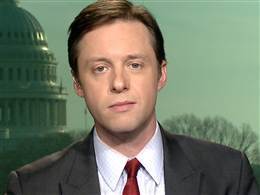 ‘टाइम‘ का लेख, वाशिंगटन ब्यूरो के डिप्टी चीफ माइकल क्राउले द्वारा लिखा गया है जिसकी शुरुआत इस वक्तव्य से होती है ”बराक ओबामा सिर्फ एक पूरे दिन के राष्ट्रपति रहे हैं और वह 22 जनवरी, 2009 को जब उन्होंने केंद्रीय अभियान वायदे पर अमल किया।” यह तर्क देते हुए कि अमेरिका के संस्थापक भी इस पर सहमत होंगे कि अमेरिका अवश्य ही ”व्यवहार के उन मूल स्तरों का पालन तभी नहीं करेंगे जब आसनी हो अपितु उस समय भी करेंगे जब इन पर अमल करना कठिन हो,” राष्ट्रपति ने गुआंतानामो बे बंदीगृह को बंद करने के एक सरकारी आदेश पर हस्ताक्षर किए और कहा कि इन्हें बंद करना अमेरिका के उन ‘नैतिक उच्च आधारों‘ को पुनर्स्थापित करेगा जोकि बुश कार्यकाल के दौरान अल-कायदा के विरुध्द चलाए गए अभियान में तिरोहित हो गए थे।
‘टाइम‘ का लेख, वाशिंगटन ब्यूरो के डिप्टी चीफ माइकल क्राउले द्वारा लिखा गया है जिसकी शुरुआत इस वक्तव्य से होती है ”बराक ओबामा सिर्फ एक पूरे दिन के राष्ट्रपति रहे हैं और वह 22 जनवरी, 2009 को जब उन्होंने केंद्रीय अभियान वायदे पर अमल किया।” यह तर्क देते हुए कि अमेरिका के संस्थापक भी इस पर सहमत होंगे कि अमेरिका अवश्य ही ”व्यवहार के उन मूल स्तरों का पालन तभी नहीं करेंगे जब आसनी हो अपितु उस समय भी करेंगे जब इन पर अमल करना कठिन हो,” राष्ट्रपति ने गुआंतानामो बे बंदीगृह को बंद करने के एक सरकारी आदेश पर हस्ताक्षर किए और कहा कि इन्हें बंद करना अमेरिका के उन ‘नैतिक उच्च आधारों‘ को पुनर्स्थापित करेगा जोकि बुश कार्यकाल के दौरान अल-कायदा के विरुध्द चलाए गए अभियान में तिरोहित हो गए थे।
लेख में ओबामा द्वारा मई, 2009 में कहे गए वाक्यों को उदृत किया गया है: ”मैं आपको बता सकता हूं कि ऐसी समस्या के बहाने का गलत उत्तर समाप्त हो जाएगा। मैं इसका निर्णय किसी और के लिए नहीं टालूंगा। इसके समाधान की जिम्मेदारी मेरी है।” लेख कहता है: ”चार वर्ष बाद भी गुआंतानामो बे अभी भी है-और इसके 166 कैदियों द्वारा व्यापक भूख हड़ताल और असहयोग-ओबामा फिर से अपनी वह जिम्मेदारी पूरी करने का प्रयास कर रहे हैं।
ड्रोन हमलों सहित आतंकवाद विरोधी नीतियों सम्बन्धी 23 मई के अपने सम्बोधन में ओबामा ने घोषणा की कि 9/11 के बाद के आतंकवाद विरोधी युध्द के पश्चात् अमेरिका के बदनाम हुए प्रतीक को बंद करने के पहले प्रयास में आने वाली राजनीतिक बाधाओं के पश्चात् वह एक नयी शुरुआत करेंगे। ओबामा ने कहा: ”(इतिहास) आतंकवाद के विरुध्द हमारे संघर्ष के इस पहलू पर कठोर निर्णय देगा और हम उन सबके प्रति जो इसे समाप्त करने में असफल रहे हैं।”
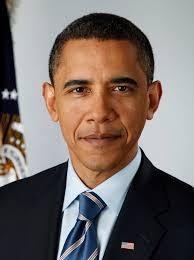 ‘टाइम‘ में लेख आगे लिखा गया है:
‘टाइम‘ में लेख आगे लिखा गया है:
लेकिन ओबामा को अपनी प्रसिध्द वाकपटुता के अनुरुप कड़ाई से आगे बढ़ना होगा। इन्हें रिहा करने या अमेरिकी बंदीगृहों में उन दर्जनों लोगों जिन्हें खतरनाक आतंकवादी समझा जाता है चाहे वे न हों - को लाने का विरोध अभी भी काफी है। यह संभावना पूछे जाने पर कि क्या राष्ट्रपति पद से निवृत होने से पहले ओबामा गुआंतानामो को बंद कर सकेंगे, इस पर डेविड रेमेज़ जोकि 18 गुआंतानामो कैदियों के वकील हैं, का कहना है, ”जीरो”।
गुआंतानामो मे बंदी रखे गए आतंकवादियों या संदिग्ध आतंकवादियों के वकील द्वारा प्रकट किए गए विचारों को मैं खुलकर अपनाने को तैयार नहीं हूं। लेकिन मैं यह भी मानता हूं कि ओबामा अपने चुनावी वादे को तभी पूरा कर सकते हैं जब यदि उन्हें इसके लिए पर्याप्त जनसमर्थन मिले। आज के परिदृश्य में अमेरिकी सरकार ऐसा करती प्रतीत नहीं होती।
भारत मे, हमने देखा है कि सन् 1977 के चुनावी नतीजों, जिन्होंने श्रीमती गांधी को यह अहसास कराया कि अदालत के एक फैसले के गंभीर आयामों से अपने को बचाने के लिए उन्होंने जब संविधान के आपातकाल प्रावधानों का ढिठाई से दुरूपयोग किया, तो वे कितनी गलत थीं। दूसरी ओर ओबामा के संदर्भ में, 9/11 की पृष्ठभूमि में उनकी दुविधा वास्तव में सत्य है और समझ में आने वाली भी है। दूसरी ओर वह गंभीरता से इस पर विचार कर रहे हैं कि आतंकवाद के ऊपर उनके देश द्वारा विजय पाने के संकल्प में कोई कमी न आने देते हुए कैसे इसे सुलझाया जाए - यह उनकी ईमानदारी को प्रकट करता है।
इसलिए कोई आश्चर्य नहीं कि माइकल क्राऊले के आवरण पृष्ठ पर शीर्षक है: ”व्हाई गिटमो विल नेवर क्लोज” और साथ में एक उपशीर्षक है: ”राष्ट्रपति ओबामा विवादास्पद बंदीगृह को बंद करना चाहते हैं लेकिन उन नीतियों को नहीं जिनका वह प्रतिनिधित्व करते हैं।”
लालकृष्ण आडवाणी
नई दिल्ली
4 जून, 2013

L.K. Advani's Blog
- L.K. Advani's profile
- 10 followers


